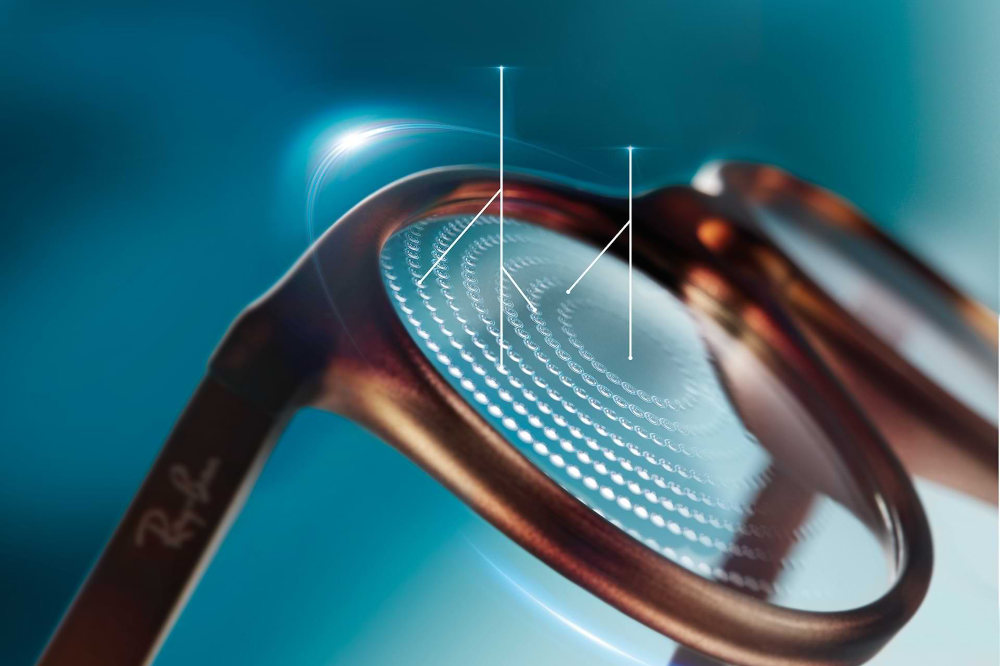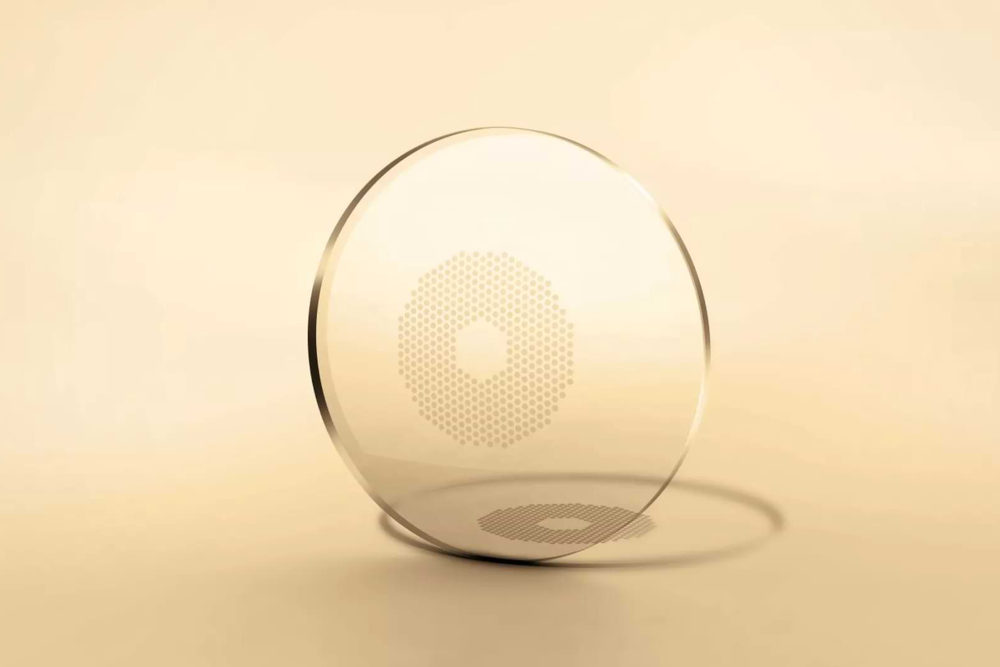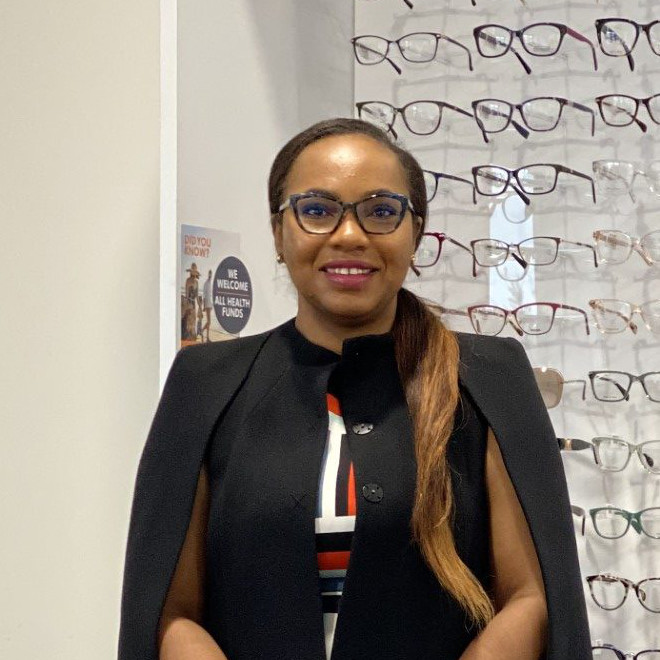Are you aware of how the battle against childhood myopia is being revolutionized by innovative, modern lenses?
My name is Juliet Menakaya, the proud owner and paediatric optometrist at Junic Eye Care, Canberra. My passion lies in ensuring that all individuals, especially our young ones, have access to comprehensive eye care.
I have special qualifications in children’s eye care. I focus on nurturing healthy vision from an early age. Choosing the right myopia control glasses is more than about seeing clearly today. It’s about protecting your child’s vision for the future.
Let me share the story of a patient of ours. Let’s call her Angie. This bright 9-year-old struggled with reading from the board at school. It held back her learning. Despite trying various over-the-counter reading glasses, nothing seemed to improve her vision. That’s when her parents decided to bring her to our practice, drawn by my experience in treating young children with myopia. After a full eye exam, we fitted Angie with Stellest lenses. Soon, her school performance greatly improved. She no longer dreaded going to class and could take part in school activities again. It was a happy outcome indeed for our patient and her family.
Don’t let vision issues hold you or your loved ones back. Book a comprehensive eye care checkup with us today. It’s the first step to clearer, healthier vision.
Understanding Myopia Control
Why is myopia control critical for children? Vision is a cornerstone of how we interpret our surroundings and perform daily tasks. When a child’s eyesight begins to deteriorate, particularly due to myopia or short-sightedness, it doesn’t only affect their ability to see clearly; it can impact their educational development, sports performance, and overall quality of life.
Effective myopia management can significantly slow down the progression of myopia, thereby mitigating the risks associated with high levels of short-sightedness, which include a greater susceptibility to eye diseases like glaucoma, cataracts, and retinal detachment later in life. My approach focuses on early intervention, leveraging the latest advances in lens technology to preserve the vision of our youngest patients.
A recent study was conducted in the Eye Hospital of Wenzhou Medical University, China, from July 2018 to October 2020 to test if specially shaped myopia control glasses could slow down the progress of myopia.
- Who Participated: Children between 8 to 13 years old with mild to moderate nearsightedness participated in the study.
- What Was Tested: Children wore three different types of glasses:
- Glasses with Highly Aspherical Lenslets (HAL)
- Glasses with Slightly Aspherical Lenslets (SAL)
- Single-vision Spectacle Lenses (SVL)
- Results:
- With regular glasses (SVL), nearsightedness still increased quite a bit.
- Glasses with specially designed lenses (both HAL and SAL) slowed down the worsening of nearsightedness. HAL glasses were more effective, especially when worn for at least 12 hours a day.
- Conclusion: Myopic defocus involves using lens designs that change how light is focussed on objects in the peripheries of a child’s vision. This sends focus signals to the retina that slow the eye’s axial growth. Myopic defocus lenses can slow the progression of myopia in children.

Essilor Stellest

Hoya MiyoSmart
The Contenders: Stellest vs MiyoSmart
Let’s look at two brands that are leading the way in the development of myopia control lenses – Stellest and MiyoSmart. Both offer a unique approach to managing myopia in children, employing that latest research in myopic defocus strategies.
Stellest
Stellest lenses leverage Highly Aspherical Lenslet Target (HALT) technology, which sets them apart from other myopia control lenses like MiyoSmart with its DIMS technology. HALT employs thousands of tiny, precision-engineered lenslets distributed across the surface of the lens. These lenslets are meticulously crafted to focus light in a specific pattern that reduces the stimulus for axial eye growth—a crucial aspect of myopia progression.
The uniqueness of HALT technology lies in its impact on both central and peripheral vision. While central vision remains clear and unaffected, the peripheral vision experiences a specific defocus, which is integral to the myopia control strategy. This defocus in the periphery helps to signal the eye to cease growing longer, thus effectively managing myopia progression.
Additionally, HALT technology ensures a seamless transition between the multiple focal points throughout the lens, enhancing comfort and reducing eye strain for the wearer. This feature is particularly important as it allows for a more natural visual experience during daily activities, making these lenses not only effective in controlling myopia but also comfortable and adaptable to various lifestyle needs.
| Statistic | What it Means |
|---|---|
| 67% | Stellest lenses reduce the progression of short-sightedness in children by 67% on average compared to regular glasses, when worn for 12 hours a day. |
| 9 out of 10 children | 90% of children wearing Stellest lenses experienced eye growth rates similar to or slower than children without myopia. |
| 2 out of 3 children | Two-thirds of children who wore Stellest lenses had stable vision correction needs after the first year. |
Source: https://www.essilor.com/ie-en/products/stellest/frequently-asked-questions/
MiyoSmart
MiyoSmart lenses stand out in the field of myopia control through their innovative use of Defocus Incorporated Multiple Segments (DIMS) technology. This unique approach involves integrating treated zones within the lens to create a defocused periphery while preserving a clear central vision.
The core of DIMS technology is its distinctive honeycomb pattern of lenslets, which evenly distributes these defocused segments around a clear central zone. This design ensures that while the central vision remains sharp and unaffected, the peripheral vision is subtly defocused, which is crucial for signaling the eye to halt axial growth and thereby control myopia progression.
The effectiveness of DIMS technology in slowing myopia progression has been extensively validated through clinical research. These studies have demonstrated significant reductions in myopia progression in children wearing MiyoSmart lenses compared to those using standard lenses. The consistent defocus provided by the honeycomb arrangement helps maintain active myopia control throughout the day, addressing the underlying mechanisms that contribute to eye elongation.
| Statistic | What it Means |
|---|---|
| 52% slower | Children wearing MiyoSmart lenses experienced a 52% slower progression of myopia compared to those wearing regular glasses. |
| 62% less | In children wearing MiyoSmart, the lengthening of the eye (axial elongation) was 62% less than those wearing regular glasses. |
| 21.5% no myopia progression | Over a 2-year period, 21.5% of children using MiyoSmart lenses did not have any progression in their myopia. |
Source: https://bjo.bmj.com/content/104/3/363
Source: https://bjo.bmj.com/content/106/8/1110
Source: https://www.nature.com/articles/s41598-023-32700-7
Stellest vs MiyoSmart Compared
| Basis of Comparison | Stellest Results | MiyoSmart Results |
|---|---|---|
| Effectiveness in Myopia Control | 67% | 62% |
| Lens Material | Polycarbonate | Polycarbonate |
| Coating Features | 100% UV protection, Anti-reflective, Easy to clean, (+ Blue light protection with Crizal® coating treatment) | 100% UV protection, Anti-reflective, Easy to clean, Blue light protection |
| Photochromic Option | Not available | Available as ‘SUN‘ |
| Myopia Control Method | Myopic defocus | Myopic defocus |
| Lens Design | A constellation of aspherical lenslets on 11 rings | Hundreds of small segments of constant myopic defocus evenly distributed (honeycomb structure) at the peripheral portion of the lenses |
| Technology Used | H.A.L.T Technology (Highly Aspherical Lenslet Target) | D.I.M.S Technology (Defocus Incorporated Multiple Segment) |
| Central Clear Zone | 9mm | 9.4mm |
| Power Range Available | sph 0 to -10.00, cyl -4.00 | sph 0 to -10.00, cyl -4.00 |
| Adaptation Difficult Level | Easy | Easy |
| Safety and Aesthetics | Safe and non-invasive, Good appearance | Safe and non-invasive, Good appearance |
| Price ($AUD) | Approx $AUD 600 / pair of lenses + cost of frame + $AUD 100 / Crizal® coating treatment |
Approx $AUD 500 / pair of lenses + cost of frame |
Frequently Asked Questions
Can myopia control lenses reverse myopia?
It’s important to clarify that myopia control lenses do not reverse existing myopia. Instead, their primary function is to slow the progression of myopia, potentially reducing the severity of the condition as the child grows.
At what age does myopia stop?
Myopia typically progresses as a child grows and usually stabilizes in the late teens or early twenties. However, this can vary widely depending on individual factors, including genetics and environmental influences.
What worsens myopia?
Factors that can exacerbate myopia include excessive near work, such as reading or screen time, and insufficient exposure to outdoor light. Encouraging regular breaks from close activities and spending more time outdoors can help manage the progression of myopia.
What is mild, moderate, and high myopia?
Mild myopia typically ranges from -0.25 to -3.00 diopters, moderate myopia ranges from -3.25 to -6.00 diopters, and high myopia is considered greater than -6.00 diopters. High myopia increases the risk of more severe eye health issues later in life.
Can eye fatigue cause myopia?
While eye fatigue itself does not cause myopia, prolonged periods of visual strain without adequate breaks can contribute to its progression. Ensuring proper visual hygiene, such as regular eye exams and appropriate vision correction, can help alleviate eye fatigue and manage myopia.
Watch the following video to learn more about myopia control.
CONCLUSION
Stellest and MiyoSmart lenses offer new ways to control myopia. Each uses unique technology to slow the progression of nearsightedness in children.
To choose what’s best for your child, understand the differences in lens design and myopia control – Stellest with HALT and MiyoSmart with DIMS.
Without help, myopia can get worse. It raises the risk of getting serious eye diseases later in life. Your child’s vision is too important to delay. Let Junic Eye Care guide you to the best myopia control solution without delay.
To visit our optometry practice, click the “Book Online” button at the top of the page or call (02) 6152 8585 today.
You’ll find our clinic conveniently located in the Molonglo Health Hub, just a short 10 minute drive from central Canberra, with plenty of free parking when you get here.

CANBERRA OPTOMETRIST
Juliet obtained her Doctor of Optometry degree from the University of Benin, Nigeria in 2006. She completed an internship programme before migrating to Australia, where she completed a master’s degree in public health at the University of Sydney in 2014. Following this, Juliet obtained a Master of Orthoptics from the University of Technology Sydney (UTS) in 2017.
Juliet has completed her competency in optometry examination with OCANZ (Optometry Council of Australia and New Zealand), and obtained her ophthalmic prescribing rights from ACO (Australian College Of Optometry Victoria). Juliet has worked in various positions, including retail Optometry, the Ophthalmology Department at Canberra Hospital, and more recently, at the John Curtin School of Medical Research (ANU).
As a dedicated Canberra optometrist, Juliet is passionate about helping people with low vision, and binocular vision anomalies hence her interests in Low Vision Rehabilitation, Eccentric Viewing Training and Paediatric optometry.

